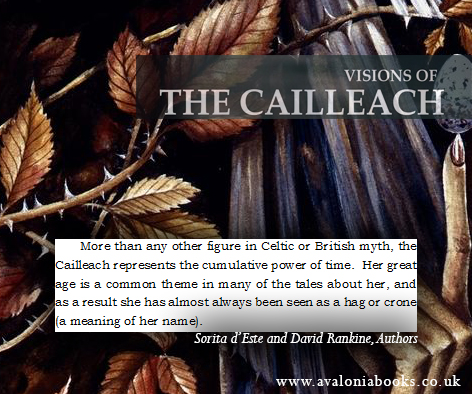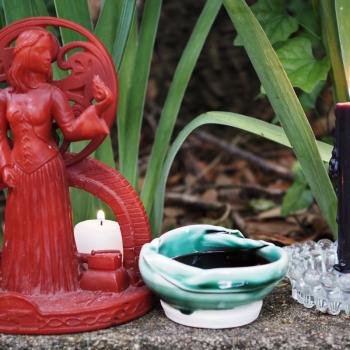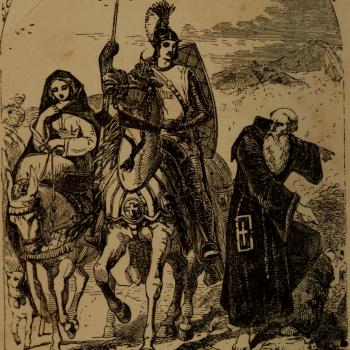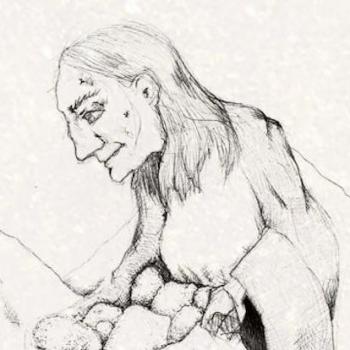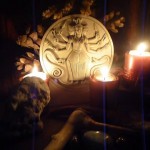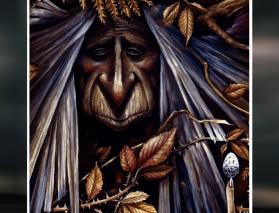
As we continue into the darker days of Winter, towards the Winter Solstice, stories of the Crone of Winter continue to be exchanged around the hearth fires everywhere she is known. In this way Her Wisdom is kept alive, as it always has been.
In the extract from Visions of the Cailleach (2009) (co-authored with David Rankine) that follows, some of the Winter Customs associated with the Winter Crone the Cailleach in the Scottish Highlands are highlighted.
Winter Customs
During the harsh winter months, people in the Scottish Highlands would expel death at Christmas by burning a log called the Cailleach Nollaich (or Nollig), a name which means the old woman of Christmas. On Christmas Eve the head of the household would go out and find a tree stump, which he would roughly carve in the shape of an old woman. This would then be burned on the fire whilst everyone made jokes and when the log had burned the festivities could start. This was believed to keep the angel of death from the household for the next year, showing another Pagan-Christian synergy in folk practice.
Another apotropaic winter custom regarding the Cailleach from the Scottish Highlands is that of Calluinn, on New-Year’s Eve (31st December). The hide of a winter cow would be wrapped around one man’s head, and the rest of the men would strike it with switches. The unruly procession would circle around each house in the village three times deiseal (sunwise) all the while banging on the walls and singing, or perhaps shouting:
“The calluinn of the yellow bag of hide,
Strike the skin (upon the wall)
An old wife [Cailleach] in the graveyard
An old wife in the corner
Another old wife beside the fire,
A pointed stick in her two eyes,
A pointed stick in her stomach,
Let me in, open this.”
Each of the revellers would then have to repeat a rhyme, and after the leader of the revellers had presented the head of the household with a caisein-uchd, the party would be admitted and offered food and drink. The caisein-uchd was a strip of sheepskin from the breast of a sheep wrapped around a stick. This had to be singed in the fire, passed three times around the family and held to the noses of all of them. Following this the drinks could be consumed, which would inevitably be whisky. This, it was believed, would bring protection for the entire household for the whole of the coming year. The parallels of symbolism within and without the house and the threefold movement sunwise, as well as the rhymes, all appear in folk customs around the British Isles in a variety of forms.
A further Scottish custom demonstrated the winter connection of the Cailleach in relation to the interplay of the two original seasons of the year, those of summer and winter. Located in Glen Calliche, off Glen Lyon, is Tigh nam Bodach (The Hag’s House). This small dry stone structure contained water-shaped stones known as the Cailleach and her children. In the summer months, from May 1st – November 1st, the stones were placed outside the shrine, upon the advent of winter the local shepherd took them into the shrine, where they were kept until the next summer.
